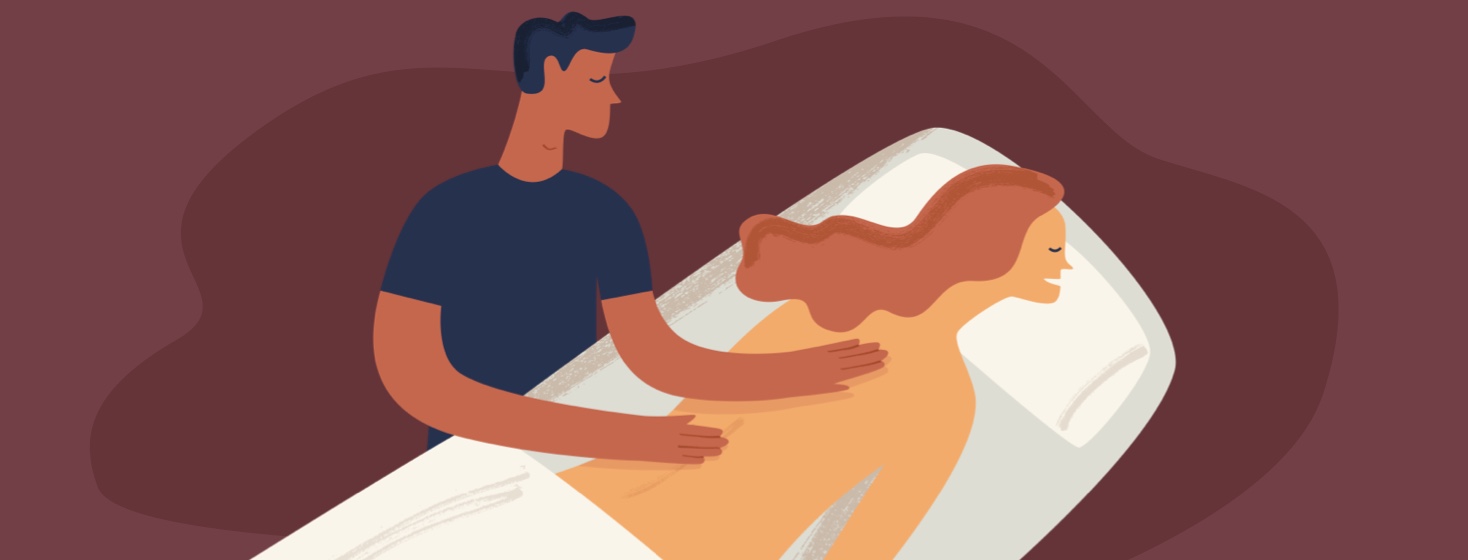The Art of At-Home Massage
Light up some candles. Get the aromatherapy going. Put on some soothing music. It's time for an at-home massage. At least, that's what it's like when I set up an at-home massage for Keegan, my husband with ankylosing spondylitis. Massage for him is a critical part of his pain management.
We're not talking about the deep tissue massage. (You know-—the kind associated with lots of pain. Where the person leaves looking more miserable than when they walked in.) It's about giving him physical touch that's pleasant as opposed to the near-constant pain he lives with.
To be totally upfront: I am not a professional massage therapist. I can barely tell you the difference between a bicep and a tricep. But, what I do know is that the art of at-home massage is not as much about the technique of perfect muscle pressure. It's about a combination of a few pieces that I'll outline here to help you get started with your at-home massage practice.
Find the space you're most safe and comfortable in (AKA get anxiety out the door!)
Any amount of fear and doubt that may enter your head makes an uncomfortable experience. Consider some of the following to maximize your massage:
- Be 120% comfortable with whomever your masseuse is. It may sound a bit silly, but this is important. Massage is sensual and intimate, but it doesn't have to be your romantic partner giving you a massage.
- Find the right spot in your home for whatever level of clothing you need (or don't need). All this to say: be careful in front of open windows.
- If you've had a tough day, do a 5-minute meditation before the massage. You'll thank me later
Get your mind ready to relax as much as your body
This means figuring out what makes you feel good. That's unique to each person, and often what can be nice to one person is annoying to another. For instance:
- What kind of candle or incense would you want to burn to relax? (I'm not a fan of fruity stuff.)
- Are there sounds or music you find relaxing?
- How much light is there in the room? (Often, less lighting is more relaxing.)
Tell your at-home masseuse what you'd like to have touched, what's in pain, and what's off-limits
For me and Keegan, that means more discussion than what may happen during a professional massage. There are times where his back hurts because it's tight and massage only makes it worse. There are times that massage relieves the pain. I can't take it personally if I begin massaging and he tells me to stop. It's all about communication!
Be willing to learn more about massage!
Look up YouTube videos on at-home massage. Find out what spots can be best for those with AS. I'm finding more and more that massaging lightly, like what it'd be like to apply lotion, is enough for Keegan to get the benefits. That means I don't get tired as quickly.
Massage proves to be a great tool for us to help Keegan relax. It's particularly helpful during flare-ups. I hope these tips help get you up and running. Who knows! Maybe one day we'll have a bunch of massage therapists with expertise in AS massage!

Join the conversation